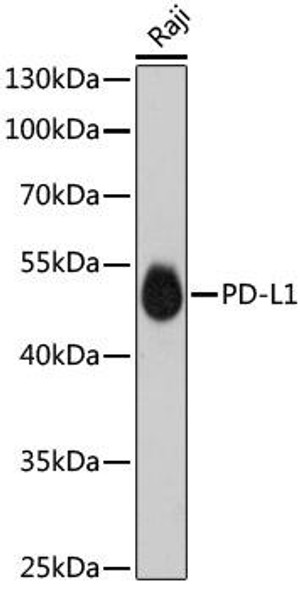This anti-PD1 antibody is a recombinant chimeric version of the original clone RMP1-14 antibody. The variable domain sequences are identical to the original clone RMP1-14; however, the constant region sequences have been switched from rat IgG2a to mouse IgG2a. In this Fc Muted™ format, mutations (LALA-PG) have been introduced at crucial binding sites of the Fc domain with the FcR and C1q, reducing or eliminating Fc-mediated Antibody Dependent Cellular Phagocytosis (ADCP).
PD-1 is a 50-55 kD member of the B7 Ig superfamily. PD-1 is also a member of the extended CD28/CTLA-4 family of T cell regulators and is suspected to play a role in lymphocyte clonal selection and peripheral tolerance. The ligands of PD-1 are PD-L1 and PD-L2, and are also members of the B7 Ig superfamily. PD-1 and its ligands negatively regulate immune responses. PD-L1, or B7-Homolog 1, is a 40 kD type I transmembrane protein that has been reported to costimulate T cell growth and cytokine production. The interaction of PD-1 with its ligand PD-L1 is critical in the inhibition of T cell responses that include T cell proliferation and cytokine production. PD-L1 has increased expression in several cancers. Inhibition of the interaction between PD-1 and PD-L1 can serve as an immune checkpoint blockade by improving T-cell responses In vitro and mediating preclinical antitumor activity. Within the field of checkpoint inhibition, combination therapy using anti-PD1 in conjunction with anti-CTLA4 has significant therapeutic potential for tumor treatments. PD-L2 is a 25 kD type I transmembrane ligand of PD-1. Via PD-1, PD-L2 can serve as a co-inhibitor of T cell functions. Regulation of T cell responses, including enhanced T cell proliferation and cytokine production, can result from mAbs that block the PD-L2 and PD-1 interaction.



![Anti-Mouse CD279 (PD-1) [RMP1-14] Recombinant Monoclonal Antibody Anti-Mouse CD279 (PD-1) [RMP1-14] Recombinant Monoclonal Antibody](https://cdn11.bigcommerce.com/s-39x6lpnvxv/images/stencil/590x590/products/120012/118195/anti-mouse-cd279-pd-1-rmp1-14-recombinant-monoclonal-antibody__03731__90471.1698937819.jpg?c=1)

![Anti-Mouse PD-1 (CD279) [29F.1A12] In Vivo Antibody - Low Endotoxin Anti-Mouse PD-1 (CD279) [29F.1A12] In Vivo Antibody - Low Endotoxin](https://cdn11.bigcommerce.com/s-39x6lpnvxv/images/stencil/590x590/products/119779/117962/anti-mouse-pd-1-cd279-29f.1a12-in-vivo-antibody-low-endotoxin__17775__19793.1698937708.jpg?c=1)


![Anti-Mouse PD-1 (CD279) [29F.1A12] In Vivo Antibody - Ultra Low Endotoxin Anti-Mouse PD-1 (CD279) [29F.1A12] In Vivo Antibody - Ultra Low Endotoxin](https://cdn11.bigcommerce.com/s-39x6lpnvxv/images/stencil/590x590/products/119780/117963/anti-mouse-pd-1-cd279-29f.1a12-in-vivo-antibody-ultra-low-endotoxin__36221__15798.1698937708.jpg?c=1)